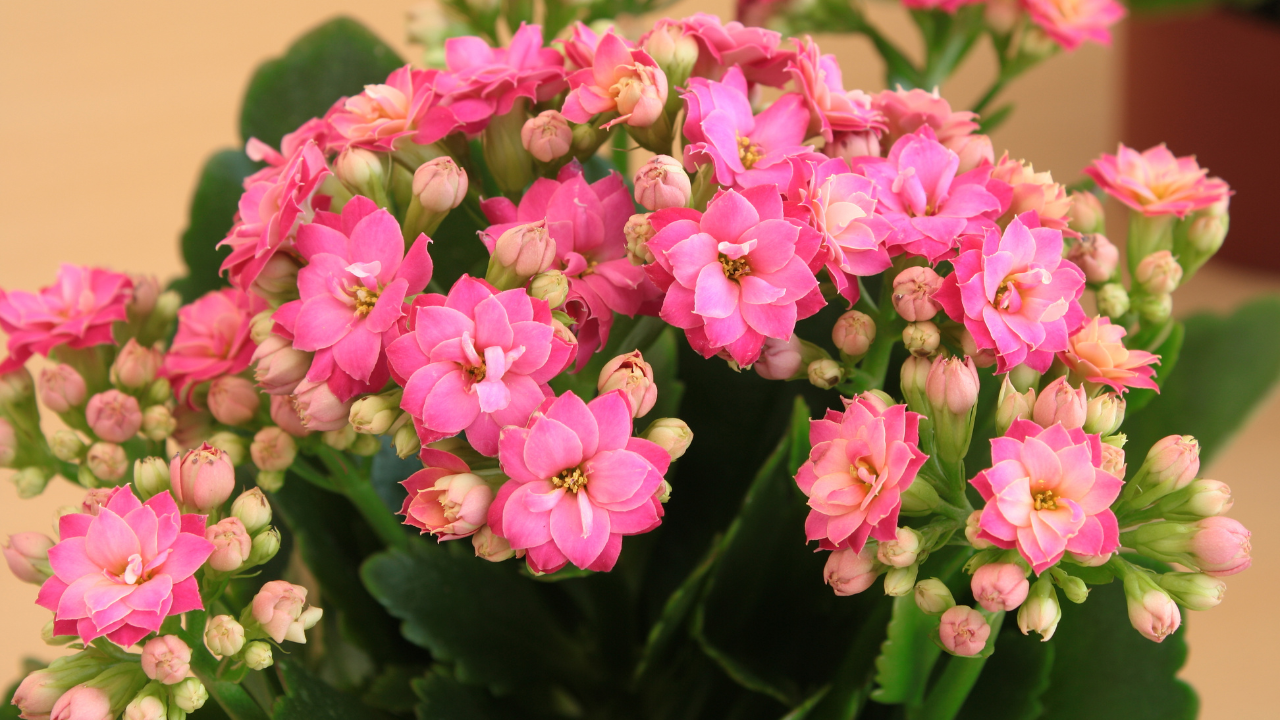Kalanchoe, a popular succulent known for its vibrant blooms and ease of care, is a delightful addition to any indoor or outdoor garden. These hardy plants can thrive with minimal attention, making them perfect for both novice and experienced gardeners. To ensure your kalanchoe stays healthy and blooms beautifully, it’s essential to follow some key care tips. Here are ten practical tips to help you care for your kalanchoe plants effectively.
1. Proper Lighting
Kalanchoe plants thrive in bright, indirect light. While they can tolerate some direct sunlight, too much can cause the leaves to scorch. Ideally, place your kalanchoe in a spot where it can receive plenty of morning sunlight but be shielded from the intense afternoon rays.
If you’re growing your kalanchoe indoors, a south-facing window is an excellent location. During the winter months, when natural light is less intense, you might need to move your plant to a brighter spot or use artificial grow lights to ensure it gets enough light to stay healthy and vibrant.
2. Watering Routine
Watering kalanchoe correctly is crucial for its health. These succulents prefer a “soak and dry” method, meaning you should water them thoroughly and then let the soil dry out completely before watering again. Overwatering can lead to root rot, a common issue with kalanchoes.
During the growing season, which typically spans from spring to fall, water your kalanchoe more frequently. In contrast, reduce watering in the winter when the plant is dormant. Always use well-draining soil to prevent water from sitting around the roots.
3. Soil Requirements
Using the right soil is vital for kalanchoe health. These plants thrive in well-draining soil, which prevents water from pooling at the roots and causing rot. A cactus or succulent mix is ideal, as it typically contains sand and perlite, enhancing drainage.
You can also create your own mix by combining regular potting soil with perlite or sand. Ensure that your pot has drainage holes to allow excess water to escape, further preventing root rot and keeping your kalanchoe healthy.
4. Temperature Preferences
Kalanchoe plants prefer a warm environment, thriving best in temperatures between 60°F and 85°F (15°C to 29°C). They can tolerate slightly cooler temperatures but are not frost-resistant. Protect your kalanchoe from cold drafts and sudden temperature drops, especially in the winter.
If you live in a region with harsh winters, it’s best to grow your kalanchoe indoors or move it inside during the colder months. A consistent temperature helps maintain the plant’s health and encourages blooming.
5. Fertilization
Fertilizing your kalanchoe can promote lush growth and vibrant blooms. Use a balanced, water-soluble fertilizer diluted to half strength during the growing season. Fertilize your kalanchoe once a month from spring through early fall.
Avoid fertilizing during the winter when the plant is dormant. Over-fertilization can harm your kalanchoe, causing salt build-up in the soil and potentially burning the roots. Always follow the fertilizer package instructions to avoid overfeeding.
6. Pruning and Deadheading
Regular pruning and deadheading can keep your kalanchoe looking its best. Remove spent flowers to encourage new blooms and prevent the plant from wasting energy on dead parts. Pruning also helps maintain a compact and attractive shape.
Cut back any leggy or overgrown stems to promote bushier growth. Use clean, sharp scissors or pruning shears to make clean cuts and prevent damage to the plant. Regular maintenance can help your kalanchoe stay healthy and produce more flowers.
7. Pest Control
Kalanchoe plants are generally resistant to pests, but they can occasionally fall victim to aphids, mealybugs, and spider mites. Regularly inspect your plant for signs of infestation, such as sticky residue, discolored leaves, or tiny bugs.
If you notice pests, treat your kalanchoe with insecticidal soap or neem oil. Wipe the leaves with a damp cloth to remove any bugs and prevent re-infestation. Keeping your plant healthy and stress-free can also help it resist pest attacks.
8. Humidity Needs
While kalanchoe plants are relatively low-maintenance when it comes to humidity, they do prefer a moderate level. Indoor humidity levels of around 40-50% are ideal. If your home is particularly dry, especially in winter, consider using a humidifier or placing a tray of water near the plant to increase humidity.
Avoid placing your kalanchoe in overly humid environments, as excessive moisture can lead to fungal issues and root rot. Balancing humidity can help your kalanchoe thrive without developing problems associated with too much moisture.
9. Repotting
Repotting your kalanchoe every two to three years helps refresh the soil and provides more space for growth. Choose a pot that is one size larger than the current one, with good drainage holes. Repotting is best done in the spring, just before the growing season begins.
Gently remove the plant from its old pot, shake off excess soil, and inspect the roots for any signs of rot or damage. Place the plant in the new pot with fresh soil, water it thoroughly, and let it settle into its new home. Regular repotting keeps your kalanchoe healthy and encourages continued growth.
10. Encouraging Blooms
To encourage your kalanchoe to bloom, provide it with a period of darkness each day. During the fall and winter, give your plant 12-14 hours of darkness for six weeks. This simulates the natural light conditions that trigger blooming.
Once buds appear, return the plant to its usual light conditions and continue regular care. Proper lighting, watering, and fertilization are crucial during this time to support the blooms. With the right care, your kalanchoe will reward you with beautiful flowers.

